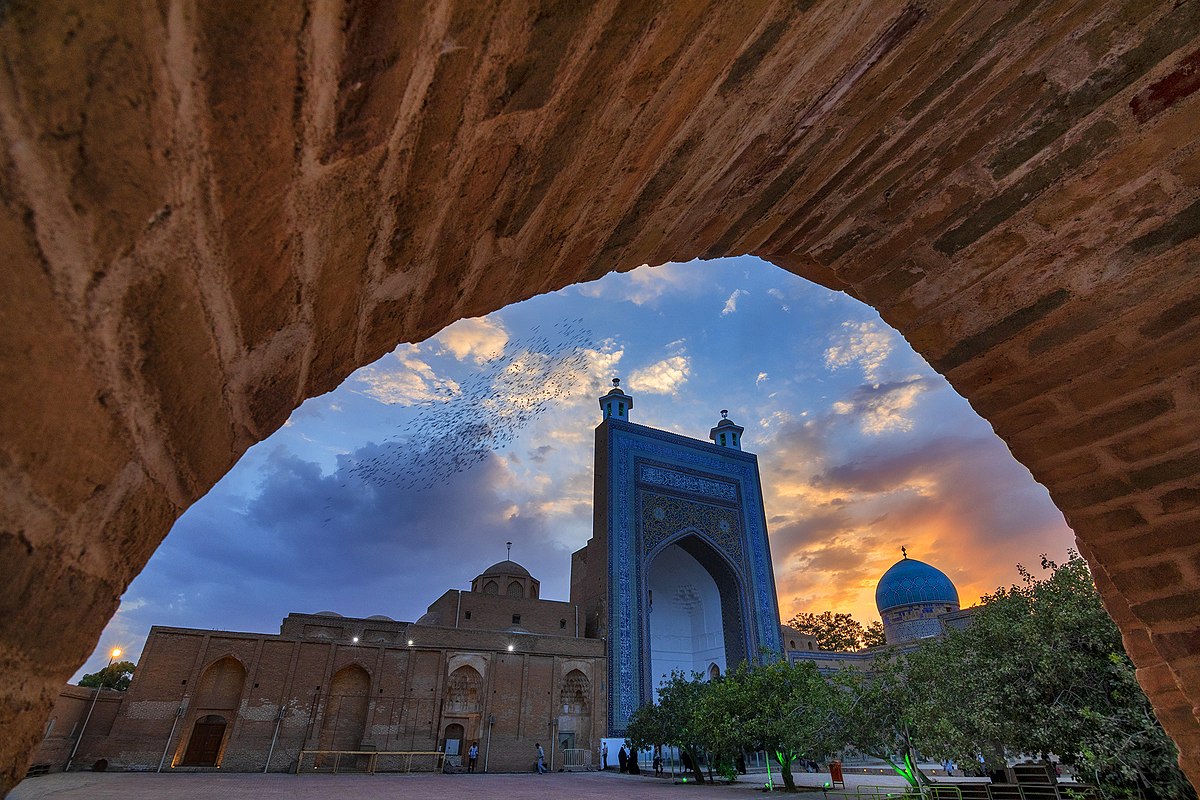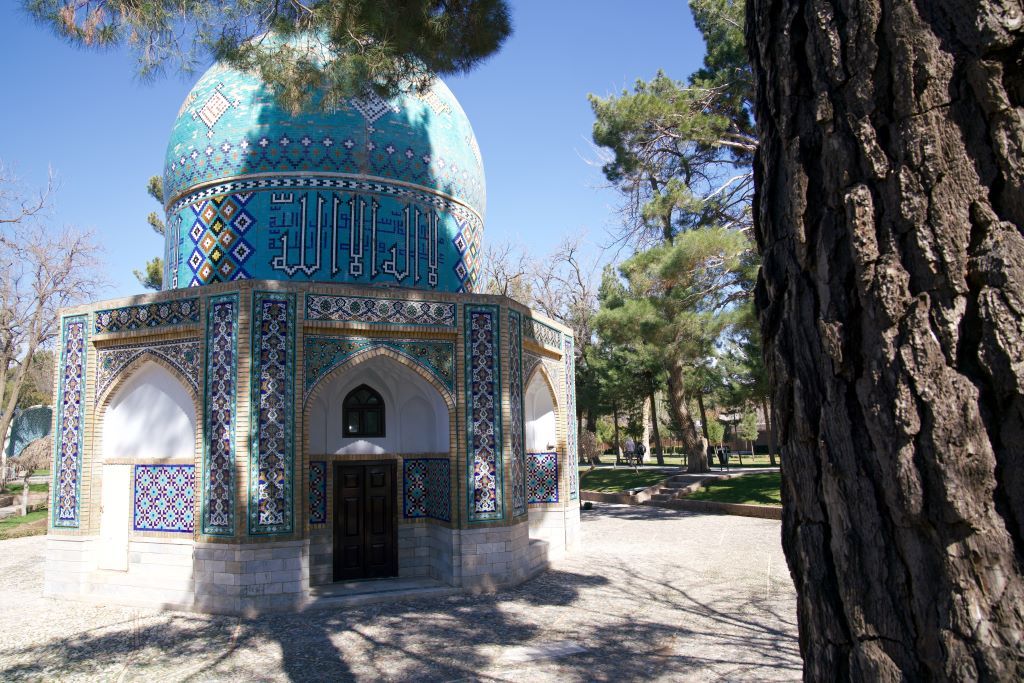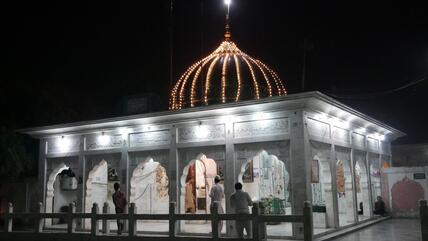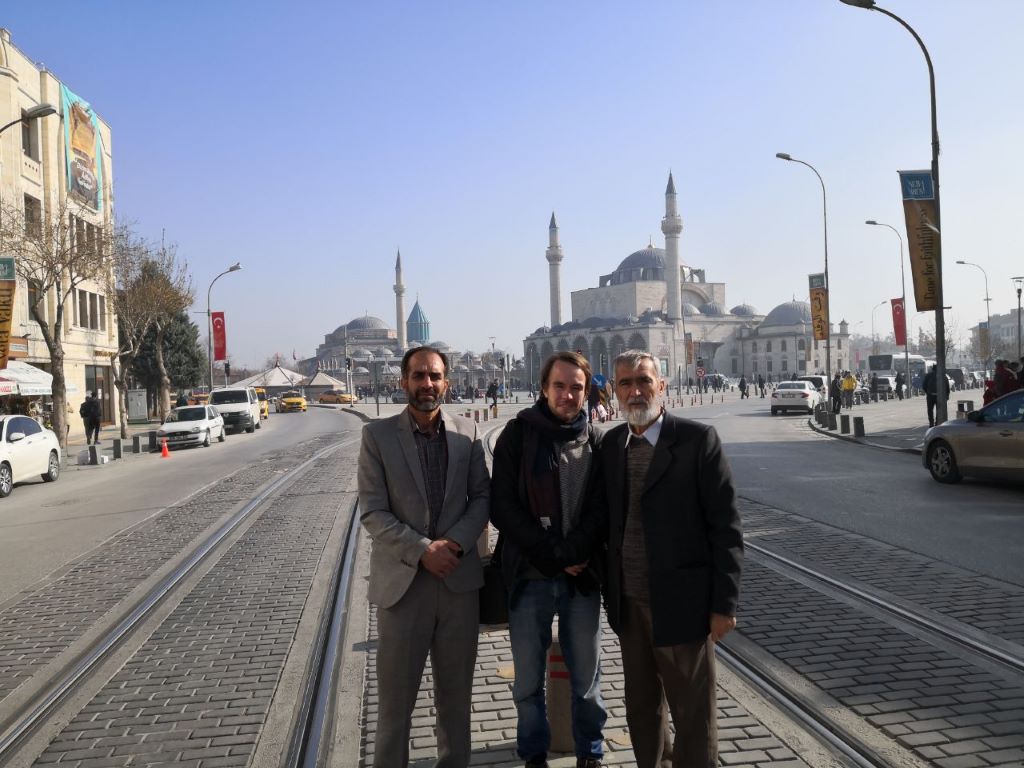Iranians seek refuge in Rumi

I was in Shiraz once when, as the constant flow of cars condensed into an evening rush-hour traffic jam, my taxi driver suddenly started to recite poetry. Hafez's verses fairly bubbled out of him, one ghazal after another. The rhyming sing-song filled the whole car and touched something deep inside me, though I didn't yet understand a word of it. And it was then, as I was paying a visit to the city of poets and fine art during my Persian degree, that I gained an insight into the intimate connection Iranians still feel to their poets:
Again and again I am impressed by the intimate relationship that many Iranians have with their classical poetry. Poetry is not a museum-piece of cultural heritage for them, but firmly embedded in life. Iranians think and feel through their poetry. It makes up an important part of their identity – being able to recite a good number of poems proves you are a true Persian.
Many Iranians had their first verses of poetry recited into their ears sitting on their parents' or grandparents' laps. So it is that even members of social classes we might view as "less educated" will quote their beloved poets at the most profane moments of everyday life.
Verses by Rumi, who is known in Persian by his honorific "Molana" (our master), also have their place in the Iranians' treasury of quotations. The Persian language of the Masnavi may now be antiquated in its vocabulary, but it is still understood more than eight centuries after it was written (though the Masnavi also contains a substantial number of Arabic verses, as well as a few in Greek and Turkish).

Masnavi commentary a bestseller
On Enqelab, "Islamic Revolution Road" in the heart of Tehran, you will find one bookshop after another. Students hurry around in search of textbooks and bibliophiles hunt for treasures. Children sell brightly coloured envelopes to passers-by; inside are slips of paper with Hafez poems written on them. The works of the Sufi poets are permanently stocked in every bookshop.
One of the booksellers tells me that in his shop, a six-volume commentary on the Masnavi has become a bestseller. A work of literary scholarship that takes up half a metre of shelf space and elsewhere would most likely be reserved for a highly specialised readership is selling like hot cakes! What is behind Rumi's current popularity in Iran?
Most people – especially in the cities – are sick of ideological Islam as it is applied in Iranian politics. They long for that soulful spirituality embodied by Rumi. Rumi's poetry is a refuge in economically difficult times, as well as an anchor amid the stress of day-to-day life and a break from the modern flood of information. There is also a trend among Iran's middle classes to see everything that is successful in the West as worthwhile. Ironically a lot of Iranians read Rumi because he's a bestseller in the USA.
In some parts of Iran, reading the Masnavi has been an element of folk culture for centuries. This is especially true of the Khorasan region, which stretches from the country's northeast right across the borders into neighbouring Afghanistan, Turkmenistan, Uzbekistan and Tajikistan. Rumi's great text was studied at the region's mystical schools for hundreds of years – particularly in Herat, the region's old cultural capital 200 kilometres to the east.

15 Masnavi reading groups for 100,000 inhabitants
The Sufis' literary and musical heritage is still very present in Torbat-e Jam. The city, named after the tomb of a local saint, is known for its dotar players, virtuosos on the two-stringed Khorasan long-necked lute.
Scattered across this city of 100,000 people in the majority-Sunni area that borders Afghanistan, there are a full fifteen Masnavi reading groups, which are very popular among the city's inhabitants. The groups – some of them run privately, others in schools or libraries – are led by poetry experts and spiritual teachers who have been engaging with Rumi's thought all their lives. One of them is Haj Naser Jami, who has been continuing the tradition of Masnawichani (reading the Masnavi) for decades:
Haj Naser is wearing a diamond-patterned tank top over a white perahan tunban – a curious outfit combining East and West. His almond eyes, which mark him out unmistakeably as a Khorasani, radiate warmth. Haj Naser is a devout Muslim, a man of impeccable manners and uncompromising hospitality. His character is a pleasant mixture of Persian politeness and Afghan humility. He may be known throughout Torbat-e Jam, but Haj Naser is reticent about his scholarship, speaking in calm, considered tones and keeping his eyes modestly lowered.
Since 1991, the year of my birth, Haj Naser has been leading weekly Rumi lessons in his home city. In all these years, he has taught the Masnavi twice from beginning to end. One complete reading takes around ten to twelve years, he tells me. A third is now reaching its end; the group is currently reading the sixth book.
As with all inspired works, the Masnavi is a book that opens itself up to recipients little by little and, like a good wine, keeps getting better over the years. Because as a person matures, so does their understanding of the text, and ever deeper layers of meaning reveal themselves to the reader.
Haj Naser's relationship to the Masnavi is therefore also the story of his own maturation. It all began with a homework exercise in middle school: "My Persian teacher asked us to choose a story from the Masnavi and rewrite it in our own words. At that time, books were not as easy to access as they are now. In my class, there were only two or three students who had an edition of the Masnavi at home."
But the young Naser had heard his father speak of the Masnavi before. He knew his father had a copy in a little niche in the living room wall, where the Koran was also kept. His father, who had studied Islamic theology in Herat in the late 1920s, and lived to be one hundred, was the Imam for Friday prayers at the mausoleum of Sheikh Ahmad-e Jam – the city's spiritual leader. Sometimes after morning prayers, when the first light of dawn was just appearing in the sky, he would read a few verses from the Masnavi and note some of them down to quote later in his sermons.

The land of the Sufis
No country in the Islamic world is influenced as strongly by the traditions of Sufi culture as Pakistan. Yet the Sufis there have been under attack from Islamic hardliners for years. By Marian Brehmer
"Only the Koran was allowed to cover the Masnavi"
"He was very particular about no one placing another book on top of the Masnavi. Only the Koran was allowed to cover the Masnavi," says Haj Naser. "Such was the esteem in which he held Rumi's work."
Haj Naser gets up and fetches an oversized book with tattered pages. "This is my father's Masnavi. In my youth the book had a mysterious quality for me, like it was sealed. Even now I find it difficult to read from," he says, showing me the tiny print – all six books of the Masnavi have been printed here in a single volume.
I open a page. The book is a lithograph with yellowed paper, almost every millimetre of it covered in calligraphic lettering. Contained in a central rectangle are Rumi's verses, with a text commentary in the margins, and around the edges are the notes handwritten by Haj Naser's father. I turn the pages reverently. How many times must they have provided guidance and inspiration! I make an effort to read a few words, but I find the tiny calligraphy almost impossible to decipher.
While I am holding the heavy book in my hands, Haj Naser quotes a verse in which Rumi characterises his masterwork: Our Masnavi is a matter of unity. / Everything that stands outside the One is an idol.
"In the outside world, we are always encountering contradictions. Hegel's dialectics also talks about that," says Haj Naser. I have often heard Iranian scholars draw parallels with German philosophers. "If there were no opposites, this creation would not exist. But in the essence there exists only love. The Masnavi leads us into this unity."
"The great masters aimed to convey their spiritual experiences to us. They wanted to encourage others to join this caravan, to enter into the world of peace and unity," says Haj Naser. "Rumi's goal wasn't to set up dervish monasteries. Like the prophets, he came to oil the cogs of life, to make them turn smoothly. So that there are fewer snags in life."
"Our lives are only fleeting, we are like travellers in a guesthouse. Why spend these one or two hours we have here with each other arguing? We should live so that we leave this world without disappointment and anguish. This is what the mystics teach us. For the mystics, anguish and joy are one and the same. They exist only in our perspective on things," Haj Naser adds. "Shall I pour you a little more tea?"
"Thank you, one cup is enough for me," I reply, and am reminded of a famous poem from the Diva-e Shams, in which Rumi compares the body to a guesthouse where sometimes pleasant, welcome guests stay – like joy and hope – and sometimes those we experience as unpleasant, such as anguish. […]

Turning to mysticism in desperate times
"It is particularly in times when despair and frustration are increasing in society that people turn to mysticism. That's also what happened after the Mongol invasion that destroyed a thousand years of civilisation in Khorasan," says Haj Naser.
Rumi's time, like our own, was a phase of upheaval. In fact, the mood among the Iranians I meet on the street seems to have been on a downward trajectory for the last few years. The economy is faltering in the face of corruption and debilitating American sanctions; food prices are rising inexorably, and Iran's leaders are trying to stifle any protest before it starts. Depression and hopelessness have long since reached epidemic levels in society.
And yet the flowers are blooming in Haj Naser's front garden as we step back outside, and the birds are twittering. In the natural world, everything is taking its course, in perfect harmony and perfect resilience. Spring is on its way.
"You have a beautiful garden," I tell Haj Naser as we are saying goodbye, to which he replies: "It is your eyes that see beautifully."
Marian Brehmer
© Qantara.de 2024
Translated from the German by Ruth Martin
The passages in italics are taken from Marian Brehmer's book "Der Schatz unter den Ruinen: Meine Reisen mit Rumi zu den Quellen der Weisheit" (Herder, 2022), a spiritual travelogue that tells of encounters with Sufis, seekers and sages in Afghanistan, Iran, Syria and Turkey. An English edition – "Looking for Rumi. A Quest to Find the Treasure Beneath the Ruins" – is due to be published at the end of January.
Brehmer studied Iranian studies and works as a freelance author with a focus on Islamic mysticism.